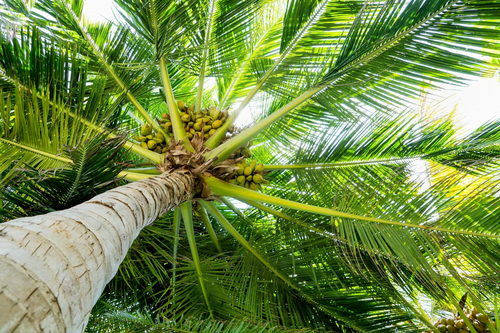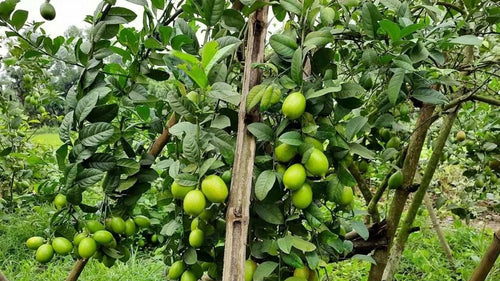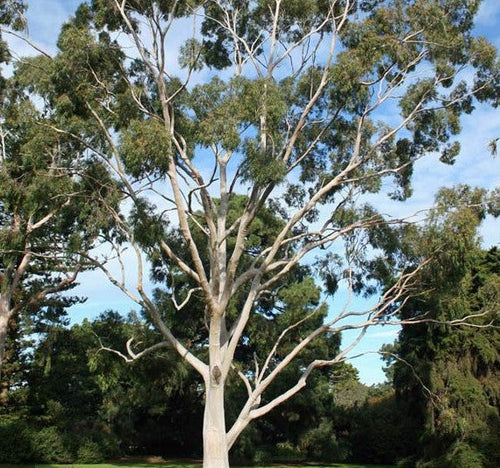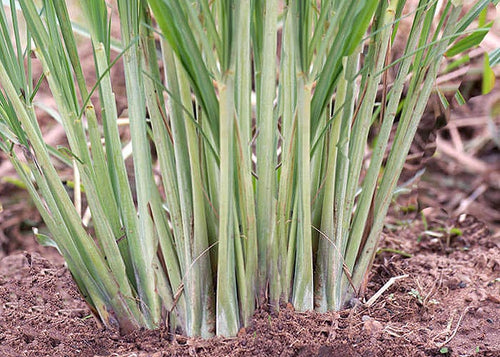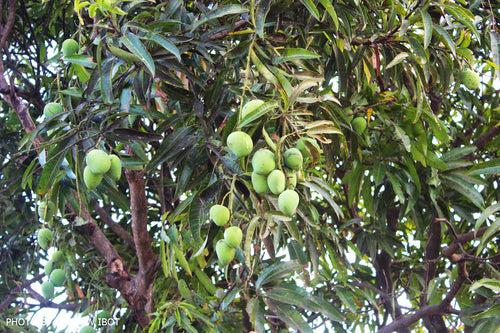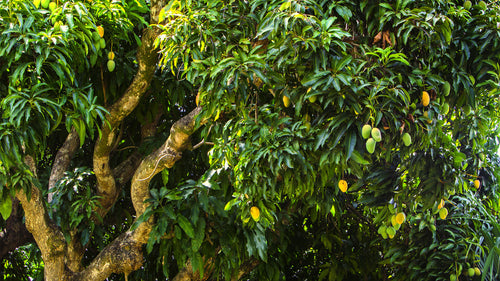AgroForestery for Digital Payment Awareness Week - By Reserve Bank Of India(RBI)
The Reserve Bank of India (RBI) marked Digital Payment Awareness Week with a unique, sustainable twist by organizing a tree plantation initiative root Read more
Project Update 2
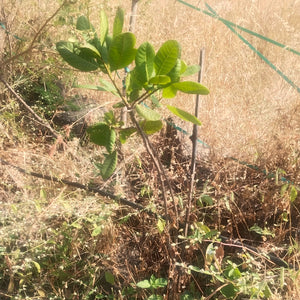
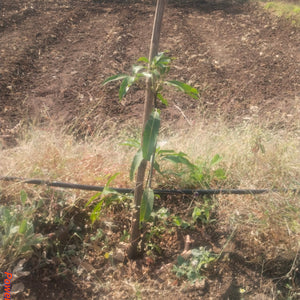
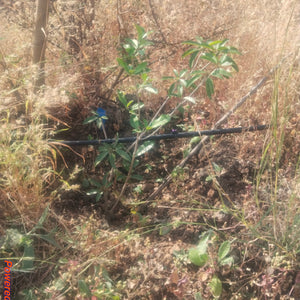
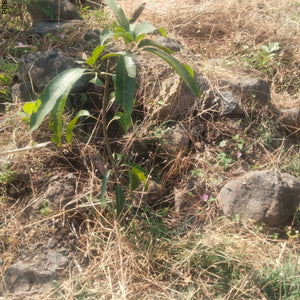
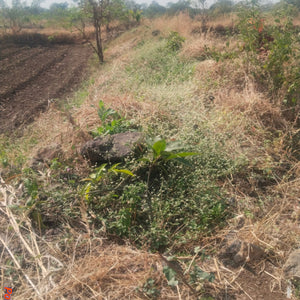
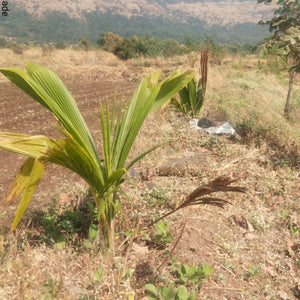
Project Update 1

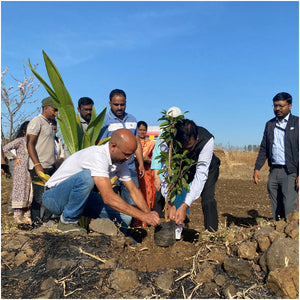
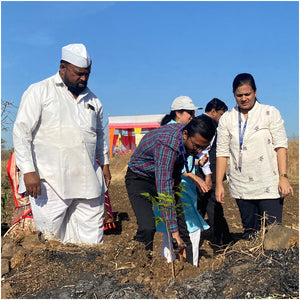
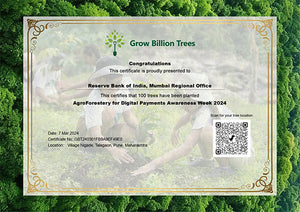


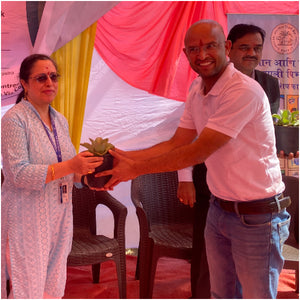
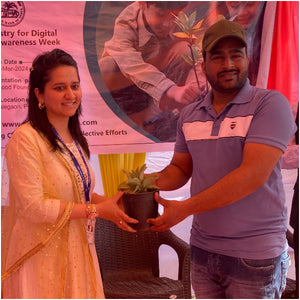
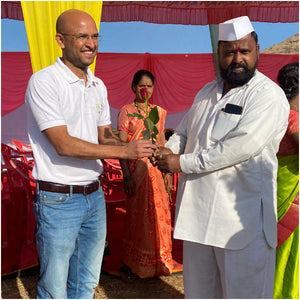

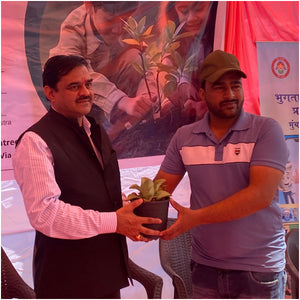

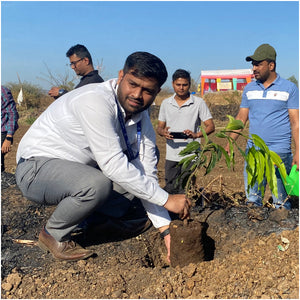

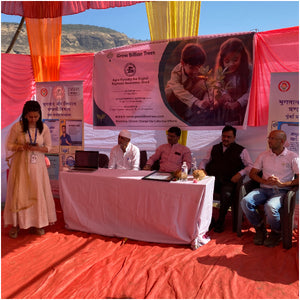
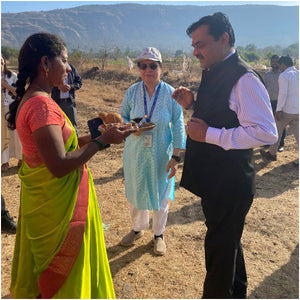
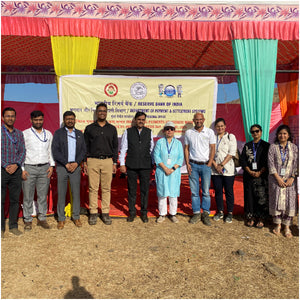
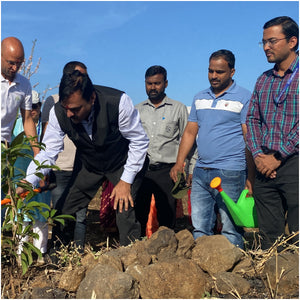
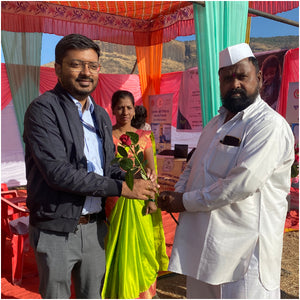
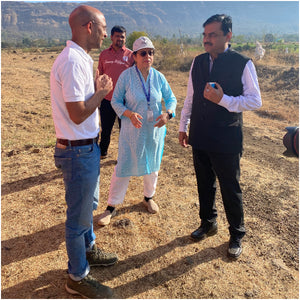

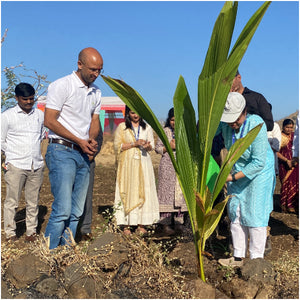
Digital Forest
Forest with 100 Trees planned
Want to plant your tree now?
Plant a Tree @ 299AgroForestery for Digital Payment Awareness Week - By Reserve Bank Of India(RBI)
The Reserve Bank of India (RBI) marked Digital Payment Awareness Week with a unique, sustainable twist by organizing a tree plantation initiative rooted in the agroforest concept. This initiative aimed to promote both environmental responsibility and digital literacy, reflecting RBI's commitment to sustainability alongside its drive to advance digital payment awareness. During the event, RBI collaborated with local farmers to plant native tree species that support soil health and biodiversity. By integrating agroforestry with a financial literacy campaign, RBI sought to highlight the importance of digital transactions and eco-friendly practices, creating a legacy of sustainability and modern financial inclusion across communities.
Project Planning & Execution
No of Trees: 100
Plantation Location: Village Nigade, Talegaon, Pune, Maharashtra 402302
Plantation Date: 7th March 2024
Name of Species: Mango, Coconut, Chiku, Kaju, Lemon
Species Selection & Its Benefits:
The initiative prioritizes the planting of native tree species, ensuring high survival rates and fostering long-term ecological stability. By aligning tree selection with local market demand, the project enhances environmental sustainability and provides farmers with viable income opportunities. Farmer consent and participation play a crucial role in species selection, ensuring that the chosen trees integrate seamlessly with existing agricultural practices.
For this initiative, Mango (Mangifera indica), Coconut (Cocos nucifera), Chiku (Manilkara zapota), Cashew (Anacardium occidentale), and Lemon (Citrus limon) were strategically selected due to their numerous ecological, economic, and social advantages. These tree species are well-adapted to the local climate, requiring minimal maintenance while providing sustainable income through fruit and nut production. Additionally, they contribute to soil enrichment, improve water retention, and support biodiversity by offering a habitat for pollinators and wildlife. This carefully planned selection strengthens both environmental conservation and the economic resilience of the local farming community, reinforcing RBI’s commitment to sustainable development.
Beneficiaries Details
| SN | Farmer Name | Google Location | Village Name | Plot Size | Mango Planted | Coconut Planted | Lemon Planted | Cashew Planted | Chiku Planted |
| 1 | Balu Bhadvat | https://bit.ly/41Fismz | Nigade | 0.5 acre | 20 | 20 | 20 | 20 | 20 |
Planting Methodology and Its Advantages
Agroforestry:
The Reserve Bank of India (RBI) implemented its tree plantation initiative using the agroforestry concept, a sustainable land management practice that integrates trees into agricultural landscapes. This approach enhances environmental conservation while providing long-term economic benefits for the farmer involved. By planting fruit-bearing trees, the initiative improves soil fertility, boosts water retention, and prevents erosion, ensuring ecological stability. Agroforestry also fosters biodiversity by creating habitats for beneficial organisms, promoting natural pest control, and supporting sustainable farming practices.
The Reserve Bank of India's (RBI) Agroforestry Initiative for Digital Payment Awareness Week showcases the integration of financial literacy with environmental sustainability. This initiative demonstrates how digital awareness and eco-conscious practices can go hand in hand to create a lasting positive impact on rural communities. By adopting agroforestry, RBI not only contributes to carbon sequestration and climate resilience but also reinforces its commitment to empowering farmers and promoting sustainable land use.
Advantages of Agroforestry
-
Increased Farmer Incomes: This approach helps in increasing the farmer’s income by as much as 3 times. Farmers benefit from diversified income sources, lifting economic resilience.
-
Improved Livelihoods: Agroforestry enhances farmers' resilience to economic and climate-related shocks by creating more sustainable and diversified farming systems.
-
Biodiversity Promotion: Agroforestry supports a diverse range of plants and animals, creating habitats for wildlife and improving ecosystem health.
-
Environmental Sustainability: This model reduces carbon emissions and promotes sustainable land management, aligning with SDG 13 (Climate Action) and SDG 15 (Life on Land).
-
Food Security: Agroforestry enhances agricultural productivity and food availability by integrating fruit-bearing trees with crops, contributing to SDG 2 (Zero Hunger).
-
Carbon Sequestration: Trees planted through agroforestry absorb carbon dioxide, helping reduce greenhouse gas emissions.
-
Climate Resilience: Agroforestry helps mitigate climate change impacts by improving land productivity and fostering biodiversity.
- Improved Soil and Water Management: Trees enhance soil fertility, reduce erosion, and increase water retention, resulting in more resilient farming.
Activities During Tree Plantation
As part of Agroforestry for Digital Payment Awareness Week, the Reserve Bank of India (RBI) undertook a tree plantation initiative aimed at promoting environmental sustainability and financial literacy. Balu Bhagvat carefully prepared the plantation site in advance to ensure optimal soil conditions and water retention. This initiative focused on planting 100 fruit-bearing trees under the agroforestry concept, enhancing biodiversity, improving soil fertility, and supporting long-term ecological balance.
The plantation event was a community-driven effort, graced by Shri Pankaj Kumar, Chief General Manager, Mumbai Regional Office, RBI, Shri Saurabh Phelix Kachhap, Manager, RBI, Sanchita Chawla, Manager, RBI, alongside the village Sarpanch, Mr. Satender Kumar, CIO and Co-founder Grow Billion Trees (GBT), GBT volunteers, RBI employees, and farmer families. The event commenced with a traditional worship ritual, after which attendees participated in planting and watering the saplings. Farmers warmly welcomed the guests, and speeches were delivered highlighting the importance of tree plantation and its alignment with the RBI’s digital payment awareness campaign. This initiative not only symbolized RBI’s commitment to environmental responsibility but also fostered community engagement, strengthening the bond between sustainability and financial inclusion.
Conclusion Elements
Impact
Direct Impact
| Parameters | Values | References |
| No. of Trees Planted | 100 | |
| Green Cover (Acres) | 3.5 | |
| Fruit Production Potential (Tons/Year) | ||
| Income Generation Potential (Rs/Year) | ||
| Carbon Sequestration Potential (KG) | 20 |
Small to medium-sized trees can sequester around 10–48 kilograms (22–106 pounds) of CO₂ annually. https://onetreeplanted.org/blogs/stories/how-much-co2-does-tree-absorb |
| Carbon Sequestration by 100 mature trees ( Tons/year) | 2 Tons | No. of Trees x Carbon Sequestration by 1 mature trees per year |
| Carbon Credit Equivalent | 2 | One carbon credit is equivalent to one tonne of carbon dioxide or the equivalent amount of another greenhouse gas. |
| Carbon Footprint of an avg Indian Citizen (Tons/Year) | 1.8 | https://www.iea.org/countries/india/emissions |
| Offsets Annual Carbon Footprint of (Adults) | 1 | Carbon offset by 100 mature trees per year / Carbon Footprint of an avg Indian Citizen per year |
Indirect Impact
Community Impact
-
Empowerment of Farmers: By providing training and resources for sustainable farming practices, agroforestry equips farmers with skills to enhance productivity and adapt to environmental changes.
-
Food Security: The integration of fruit-bearing trees and crops ensures a consistent food supply, improving nutrition and reducing hunger within the community.
-
Environmental Awareness: Community involvement in tree plantation fosters a sense of responsibility for environmental conservation and promotes sustainable practices in daily life.
-
Enhanced Social Equity: Agroforestry initiatives foster enhanced social equity by empowering marginalized farmers with sustainable livelihoods, bridging economic gaps, and promoting inclusive community participation in environmental conservation efforts.
-
Resilience to Climate Change: The diverse and sustainable nature of agroforestry helps communities mitigate the impacts of climate change, including extreme weather events, by stabilizing local ecosystems.
- Health and Well-being: Green spaces created through agroforestry improve air quality and offer a healthier environment, contributing to the physical and mental well-being of the community
Environmental Impact
-
Carbon Sequestration: Trees act as carbon sinks, absorbing significant amounts of CO2 from the atmosphere, helping to mitigate climate change and reduce greenhouse gas emissions.
-
Soil Health Improvement: Agroforestry enriches soil through organic matter from fallen leaves and roots, improving fertility, structure, and nutrient availability for crops.
-
Erosion Prevention: Tree roots stabilize the soil, reducing erosion caused by wind and water while protecting nearby agricultural fields and water bodies.
-
Biodiversity Conservation: By creating habitats for various species, agroforestry enhances biodiversity, supporting pollinators, beneficial insects, and native wildlife.
-
Water Cycle Regulation: Trees improve water retention, recharge groundwater levels, and reduce surface runoff, contributing to a more balanced and sustainable water cycle.
- Microclimate Regulation: Agroforestry moderates temperature extremes, reduces wind speeds, and increases humidity, creating favorable conditions for crop growth and ecosystem balance.
Achievements
SDG Goals Achieved through Agroforestry
SDG 1: No Poverty – RBI’s agroforestry initiative plays a vital role in reducing poverty by generating sustainable income opportunities. By integrating trees into agricultural landscapes, this initiative contributes to economic resilience, ensuring long-term financial stability for rural communities.
SDG 2: Zero Hunger – The agroforestry approach adopted by RBI enhances food security by improving soil health, increasing agricultural productivity, and supporting sustainable farming practices. This ensures long-term food availability and resilience against environmental challenges.
SDG 3: Good Health and Well-Being – Trees improve air quality, enhance biodiversity, and contribute to a healthier environment. Through its tree plantation initiative, RBI helps reduce carbon dioxide and pollutants, fostering better respiratory health and overall well-being for local communities.
SDG 4: Quality Education – Agroforestry initiatives include training and awareness programs that educate communities on sustainable land-use practices. These programs empower individuals with knowledge of conservation, environmental stewardship, and resource management.
SDG 6: Clean Water and Sanitation – Agroforestry improve water conservation by enhancing soil moisture retention, reducing runoff, and preventing water pollution. RBI’s commitment to sustainable agroforestry practices supports ecological balance and sustainable water management, ensuring access to clean water.
SDG 8: Decent Work and Economic Growth – This agroforestry initiative creates jobs in tree planting, nursery management, and agro-processing, boosting local economies. Promoting sustainable agroforestry businesses fosters entrepreneurship and enhances financial resilience for farmers through diversified income sources.
SDG 10: Reduced Inequality – This initiative by RBI supports income diversification for marginalized farmer, particularly in rural communities. Empowering farmers with sustainable agroforestry practices helps reduce economic disparities, providing equal opportunities for growth and improved livelihoods.
SDG 12: Responsible Consumption and Production – Sustainable agroforestry practices reduce the reliance on chemical inputs, promote eco-friendly agriculture, and ensure the responsible use of natural resources for long-term environmental benefits.
SDG 13: Climate Action – By acting as a carbon sink, agroforestry mitigates climate change by absorbing CO₂ emissions, preventing soil degradation, and enhancing land resilience against extreme weather conditions.
SDG 15: Life on Land – The plantation initiative supports biodiversity conservation, prevents deforestation, restores degraded land, and strengthens ecosystem health by promoting sustainable forestry practices.
SDG 17: Partnerships for the Goals – RBI’s collaboration with Grow Billion Trees demonstrates the power of partnerships in driving impactful environmental action. This synergy combines technical expertise, financial support, and community engagement to amplify sustainable development efforts.
ESG Achieved through Agroforestry
-
Environmental Impact: RBI’s agroforestry initiative integrates sustainable tree plantation with regenerative agriculture, enhancing carbon sequestration, mitigating climate change, and improving air quality. By restoring soil health, preventing erosion, and promoting groundwater recharge, the initiative ensures long-term ecological balance. The plantation fosters biodiversity by creating habitats for wildlife, reinforcing the company’s commitment to environmental sustainability and responsible land management.
-
Social Impact: The initiative empowers rural communities by providing income opportunities through farmer-led plantation activities. Agroforests enhance food security by yielding fruits and fodder while also promoting environmental awareness and sustainable livelihoods. Through its Digital Payments Awareness Week, the Reserve Bank of India (RBI) fosters community engagement and social responsibility, ensuring long-term benefits for society.
- Governance Impact: RBI’s collaboration with Grow Billion Trees ensures ethical governance, transparency, and measurable impact. The partnership integrates expert-led afforestation practices, strategic execution, and compliance with sustainability standards. By embedding accountability and responsible corporate governance, the company sets a benchmark for sustainable environmental initiatives and stakeholder trust.
Building Communities
One of the most impactful outcomes of the RBI’s agroforestry initiative was the sense of unity and collaboration it fostered within the community. By engaging local farmers, stakeholders, and environmental partners, the project became more than just a tree plantation drive; it evolved into a collective mission for a sustainable future.
-
Empowering Farmers: The farmer played an active role, not just as beneficiaries but as key participants, learning sustainable agroforestry techniques that integrated seamlessly with their livelihoods. This knowledge empowered him with long-term economic and environmental resilience, strengthening their connection to sustainable farming.
-
Fostering Partnerships: The initiative brought together RBI, Grow Billion Trees, and local communities, showcasing the power of collaboration in driving meaningful environmental impact. This synergy ensured the plantation was executed with expertise, sustainability, and measurable long-term benefits.
-
Creating a Ripple Effect: As farmers experienced the benefits of agroforestry firsthand, their enthusiasm inspired neighboring communities to adopt similar sustainable practices. This cascading effect amplified the impact, turning a single initiative into a movement for greener, more resilient ecosystems.
This initiative reinforced that true environmental sustainability is deeply rooted in community-driven efforts. It was not just about planting trees, it was about planting hope, collaboration, and a shared vision for a greener tomorrow.
Commitment by Grow Billion Trees
Trees for Corporates
Trending
Most Popular
Agroforestry Benefits
Agroforestry offers numerous benefits including improved soil health, increased biodiversity, and enhanced farm productivity through the integration of trees and crops. By incorporating trees into agricultural landscapes, agroforestry systems create more resilient ecosystems, reduce the need for chemical fertilizers, and provide additional income streams through the production of timber, fruits, and other tree-based products. This sustainable approach to farming also helps to preserve natural resources and promotes long-term environmental health.
Urban Tree Plantation
Urban tree plantations help mitigate urban heat island effects, improve air quality, and enhance the aesthetic appeal of cities by increasing green spaces. These green spaces provide shade, reduce energy consumption by cooling urban areas, and create habitats for wildlife. Additionally, urban tree plantations contribute to the mental and physical well-being of city residents by offering recreational areas and reducing stress levels. They also help in managing stormwater runoff, thus preventing urban flooding and promoting a healthier urban environment.
Corporate Tree Plantation Drives
Corporate tree plantation drives foster environmental stewardship, promote team-building among employees, and enhance a company's CSR initiatives. These drives serve as a practical demonstration of a company's commitment to sustainability and environmental conservation. By involving employees in hands-on tree planting activities, companies can build a stronger sense of community and shared purpose. Such initiatives also generate positive public relations and can enhance a company's reputation as a responsible and forward-thinking organization dedicated to making a positive impact on the environment.
Agroforestry For Sustainable Agriculture
Agroforestry practices contribute to sustainable agriculture by promoting soil conservation, reducing erosion, and supporting diverse farming systems. Integrating trees with crops and livestock creates a more balanced and productive farming environment. This approach helps to maintain soil fertility, improves water retention, and supports a variety of plant and animal species. Agroforestry systems are also more resilient to climate change, as they can better withstand extreme weather conditions and reduce the risk of crop failures, thus ensuring long-term agricultural sustainability.
Tree Plantation Impact On Climate Change
Tree plantation initiatives play a crucial role in combating climate change by sequestering carbon dioxide and reducing greenhouse gas emissions. Trees absorb carbon dioxide during photosynthesis, storing carbon in their biomass and the soil. Large-scale tree planting can significantly offset carbon emissions from human activities, contributing to global efforts to mitigate climate change. Additionally, forests and trees help regulate local climates, reduce the occurrence of extreme weather events, and maintain water cycles, making them essential for climate resilience and adaptation.
Employee Engagement Through Tree Planting
Engaging employees in tree planting activities boosts morale, fosters a sense of responsibility towards the environment, and enhances corporate culture. Participation in environmental initiatives helps employees feel more connected to their company’s values and mission. It also provides opportunities for team-building and developing a sense of community. Furthermore, employees gain a deeper understanding of environmental issues and the importance of sustainability, which can inspire them to adopt greener practices both at work and in their personal lives.
Benefits Of Agroforestry For Farmers
Agroforestry provides farmers with additional sources of income, improves crop yields, and increases resilience against climate-related challenges. By diversifying their agricultural practices, farmers can produce a wider range of products, such as fruits, nuts, and timber, which can be sold in local and international markets. This diversification reduces economic risk and improves food security. Agroforestry also enhances soil health, increases biodiversity, and provides natural pest control, leading to more sustainable and productive farming systems that are better equipped to cope with environmental changes.
Biodiversity Enhancement Through Tree Plantation
Tree plantations enhance biodiversity by providing habitats for various species and supporting ecosystem services. Planting a diverse array of tree species creates rich, multi-layered habitats that support birds, insects, mammals, and other wildlife. These plantations also help restore degraded landscapes, improve soil health, and increase water retention. By promoting biodiversity, tree plantations contribute to the resilience of ecosystems, helping them withstand environmental stressors and maintain their functionality, which is crucial for the well-being of all living organisms.
Corporate Social Responsibility And Tree Planting
Incorporating tree planting into CSR strategies helps companies demonstrate their commitment to sustainability and positively impact local communities. Tree planting initiatives can improve community relations, enhance the company’s image, and provide environmental education opportunities. By engaging in reforestation efforts, companies can contribute to global environmental goals, such as reducing carbon emissions and promoting biodiversity. This commitment to environmental stewardship not only benefits the planet but also resonates with stakeholders, customers, and employees, reinforcing the company’s role as a responsible corporate citizen.
Agroforestry And Food Security
Agroforestry systems contribute to food security by diversifying food sources, improving soil health, and promoting sustainable farming practices. Integrating trees with crops and livestock ensures a continuous supply of food products throughout the year. These systems enhance soil fertility through natural processes, reduce dependence on chemical inputs, and increase farm productivity. By creating more resilient agricultural landscapes, agroforestry helps ensure stable food production even in the face of climate change and other environmental challenges, thus supporting long-term food security for communities.
FAQ
What was the goal of the RBI and Grow Billion Trees project in Talegaon, Pune?
The Talegaon project was a unique collaboration between the Reserve Bank of India (RBI) and Grow Billion Trees. It aimed to achieve two key goals: promoting sustainable agriculture through tree planting with farmers (agroforestry), and empowering those same farmers with the knowledge and confidence to use digital payment methods securely and conveniently.
Why is agroforestry important?
Planting trees alongside crops offers a multitude of benefits. Agroforestry practices improve soil health and fertility, leading to better crop yields. They also increase biodiversity by providing habitat for wildlife and creating windbreaks to protect crops from harsh weather. Additionally, some agroforestry systems can generate extra income for farmers through the production of fruits, nuts, or other products.
Why is digital payment education crucial for farmers?
Digital payments offer significant advantages for farmers compared to traditional cash-based transactions. They provide increased security by eliminating the risk of carrying cash. Digital payments are also convenient, allowing farmers to make and receive payments electronically with ease. Furthermore, they offer access to a wider range of financial services and provide transparency and record-keeping for all transactions.
How did the project benefit the farmers in Talegaon?
The Talegaon project offered farmers a valuable opportunity to gain knowledge in two key areas. They learned about sustainable agricultural practices through agroforestry, and they received education on secure and convenient methods for managing their finances digitally. This combination empowers farmers to make informed decisions for both their environmental and financial well-being.
Can this project serve as a model for other communities?
Absolutely! The collaborative approach of the Talegaon project demonstrates its potential to be a model for other communities. It highlights the effectiveness of combining environmental initiatives like agroforestry with financial programs that promote digital payment adoption in rural areas. This approach empowers farmers through knowledge and resources, ultimately contributing to a more sustainable and inclusive agricultural sector.
How can individuals get involved in similar projects?
There are several ways individuals can get involved in projects like the one in Talegaon. Supporting organizations like Grow Billion Trees that focus on tree planting initiatives is a great way to contribute. Volunteering for financial literacy programs in rural communities can also make a significant impact. Additionally, advocating for policies that promote sustainable agriculture and financial inclusion can help create a more supportive environment for these types of projects.
What are some of the challenges associated with agroforestry implementation?
Implementing agroforestry practices can come with certain challenges. Selecting the right tree species for specific environments is crucial for success. Ensuring long-term maintenance and care of the trees is also important. Additionally, integrating agroforestry practices with existing farming methods requires careful planning and adaptation.
What are some of the challenges regarding digital payment adoption in rural areas?
Several factors can hinder the adoption of digital payments in rural India. Lack of access to smartphones or reliable internet connectivity can be a major barrier. Limited digital literacy and awareness about digital payments can also create hesitation. Additionally, concerns about security and the potential for scams can discourage some individuals from using these methods.
How can these challenges related to digital payments be addressed?
Efforts to address the challenges of digital payment adoption in rural areas can focus on expanding internet infrastructure and access to technology. Providing educational programs that explain the safe and secure use of digital payment methods is also crucial. Building trust and confidence in these systems through awareness campaigns can further encourage their adoption.
What is the future of agroforestry and digital payments in rural India?
By working together, organizations, policymakers, and individuals can create a future where sustainable agroforestry practices are widely adopted in rural India. Additionally, digital payments can become the norm for financial transactions in these communities. This combined approach can empower farmers to manage their finances effectively, contribute to a thriving agricultural sector, and promote a more sustainable future for all.
- Choosing a selection results in a full page refresh.
- Opens in a new window.


